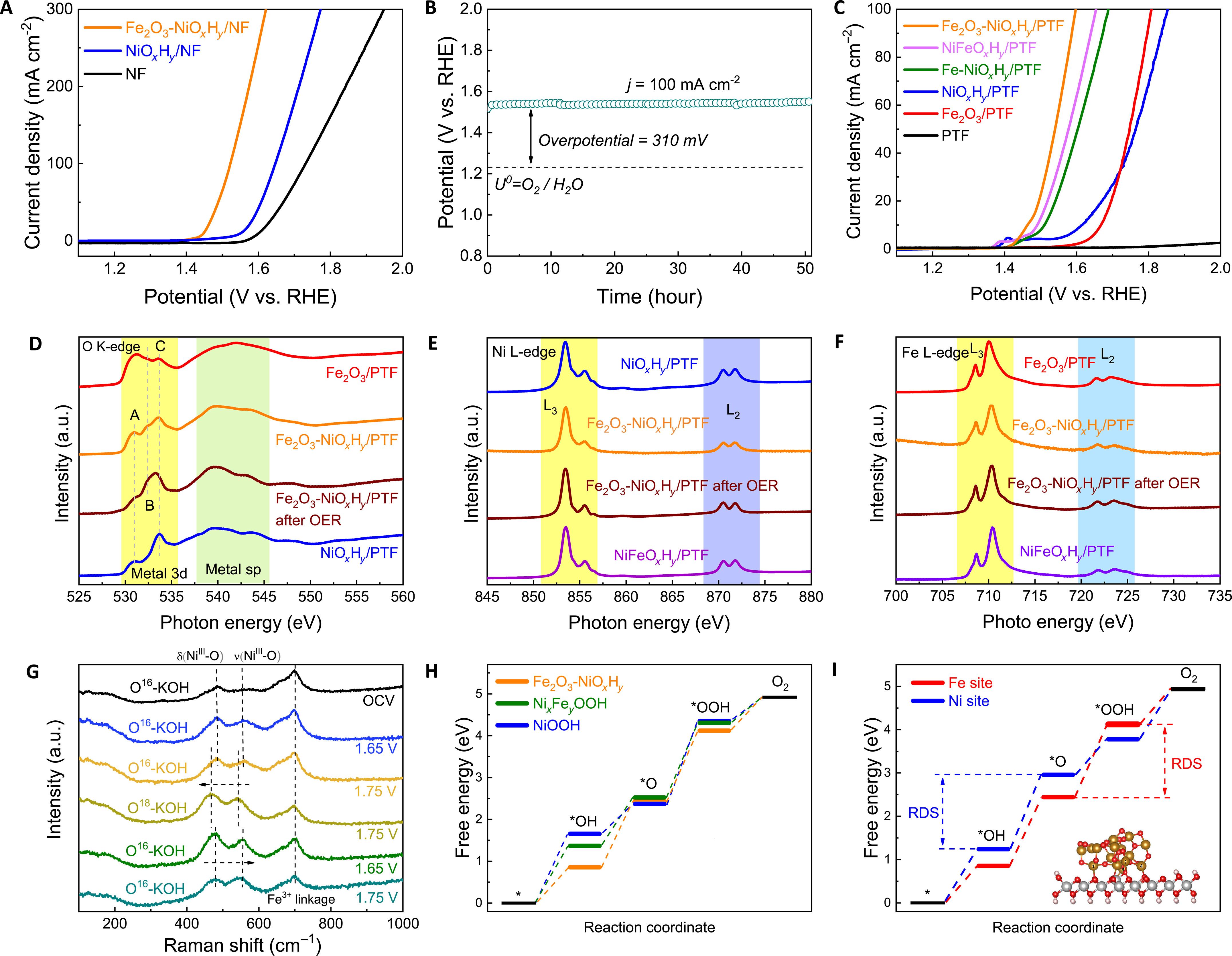在实际电流密度下具有高太阳能制氢效率的光伏-电解系统
IF 12.5
1区 综合性期刊
Q1 MULTIDISCIPLINARY SCIENCES
Science Advances
Pub Date : 2025-02-26
引用次数: 0
摘要
光伏碱性水(PV-AW)电解系统为大规模绿色制氢提供了一种有吸引力的方法。然而,目前的PV-AW系统在实际电流密度(例如100毫安厘米−2)下的太阳能制氢(STH)转换效率较低(例如20%),使得产生的H2不经济。在这里,我们设计并开发了一个高效的PV-AW系统,主要由定制的,最先进的AW电解槽和聚光光伏(CPV)接收器组成。该高效阳极析氧催化剂由氧化铁/氢氧镍(Fe2O3-NiOxHy)复合材料组成,使定制的AW电解槽具有前所未有的催化性能(例如,在1.8 V时,1 A cm - 2,在48 kWh/kgH2时,0.37 kgH2/m - 2 hour - 1)。得益于优越的水电解性能,集成的CPV-AW电解槽系统在大电流密度下的STH效率高达29.1%(如果排除引线电阻损失,则为30.3%),超过了之前报道的所有pv -电解系统。本文章由计算机程序翻译,如有差异,请以英文原文为准。

A photovoltaic-electrolysis system with high solar-to-hydrogen efficiency under practical current densities
The photovoltaic-alkaline water (PV-AW) electrolysis system offers an appealing approach for large-scale green hydrogen generation. However, current PV-AW systems suffer from low solar-to-hydrogen (STH) conversion efficiencies (e.g., <20%) at practical current densities (e.g., >100 mA cm−2), rendering the produced H2 not economical. Here, we designed and developed a highly efficient PV-AW system that mainly consists of a customized, state-of-the-art AW electrolyzer and concentrator photovoltaic (CPV) receiver. The highly efficient anodic oxygen evolving catalyst, consisting of an iron oxide/nickel (oxy)hydroxide (Fe2O3-NiOxHy) composite, enables the customized AW electrolyzer with unprecedented catalytic performance (e.g., 1 A cm−2 at 1.8 V and 0.37 kgH2/m−2 hour−1 at 48 kWh/kgH2). Benefiting from the superior water electrolysis performance, the integrated CPV-AW electrolyzer system reaches a very high STH efficiency of up to 29.1% (refer to 30.3% if the lead resistance losses are excluded) at large current densities, surpassing all previously reported PV-electrolysis systems.
求助全文
通过发布文献求助,成功后即可免费获取论文全文。
去求助
来源期刊

Science Advances
综合性期刊-综合性期刊
CiteScore
21.40
自引率
1.50%
发文量
1937
审稿时长
29 weeks
期刊介绍:
Science Advances, an open-access journal by AAAS, publishes impactful research in diverse scientific areas. It aims for fair, fast, and expert peer review, providing freely accessible research to readers. Led by distinguished scientists, the journal supports AAAS's mission by extending Science magazine's capacity to identify and promote significant advances. Evolving digital publishing technologies play a crucial role in advancing AAAS's global mission for science communication and benefitting humankind.
 求助内容:
求助内容: 应助结果提醒方式:
应助结果提醒方式:


